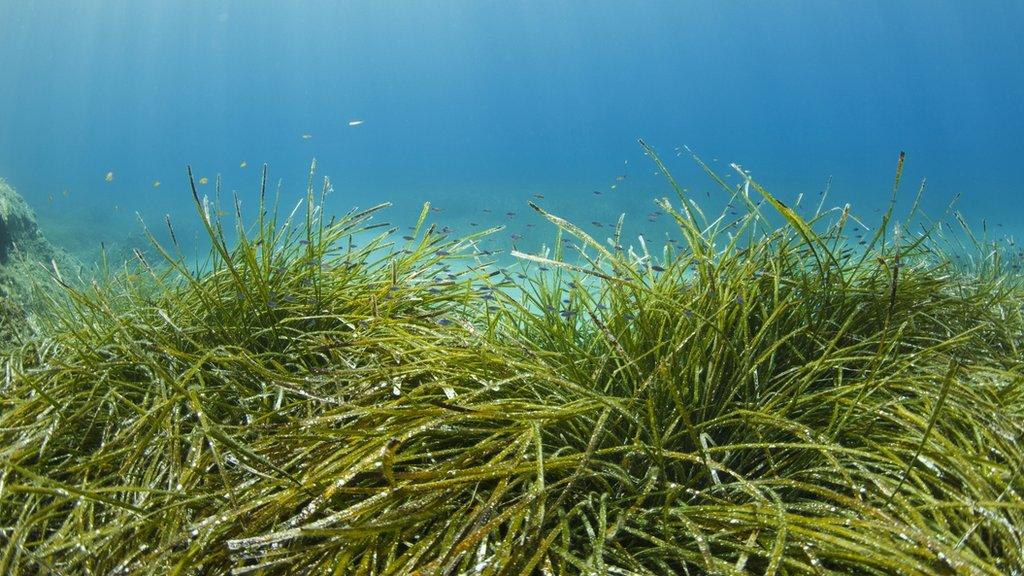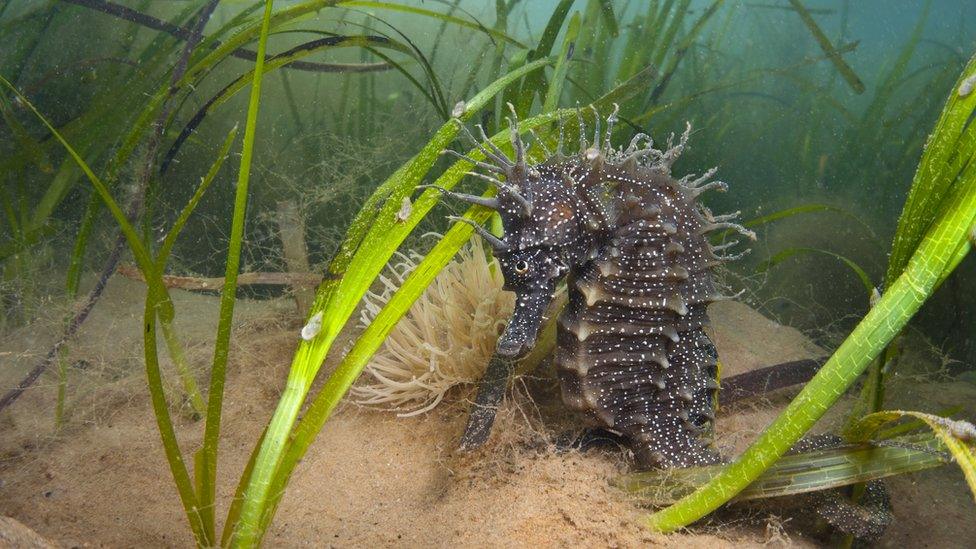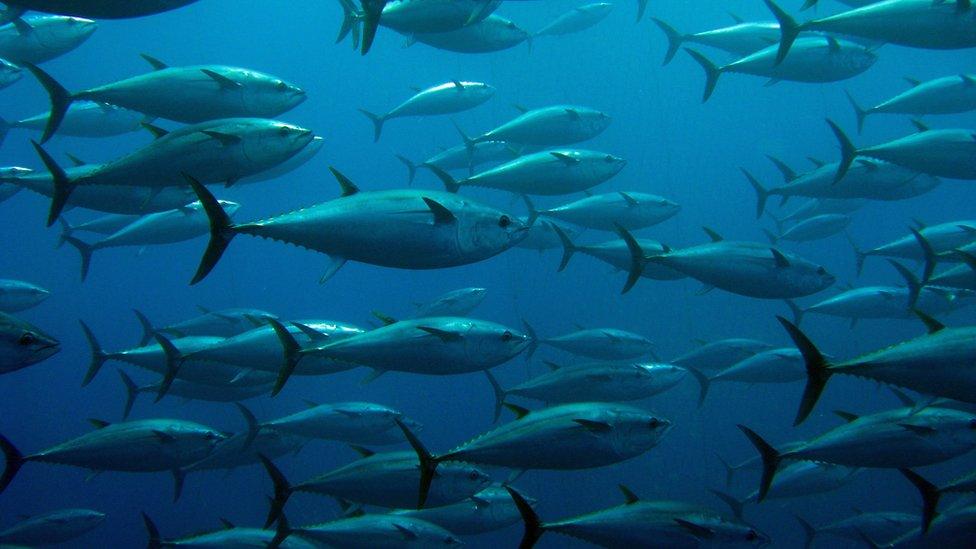Saving seagrass: What's being done to save the 'wonder plant'?
- Published
- comments

Scientists in the UK are trying to save seagrass.
It might not sound very interesting (after all it is grass that grows in the sea!) - but it's been described as a climate change-fighting 'wonderplant'.
Experts think that seagrass can help to tackle climate change because it can absorb carbon dioxide much faster than trees can.
Carbon dioxide is a gas which contributes to global warming - that's the rise in temperature of the Earth's atmosphere.
Alec Taylor from the World Wildlife Fund (WWF) said: "We see seagrass as this wonder plant because of its ability to fight climate change, to help fish stocks, coastal communities and livelihoods."
It's a plant that lives in shallow waters of coastal regions.
But, researchers believe that around 92% of the UK's seagrass has been lost in the last 100 years.
It's thought the decline is because of pollution, as well as things that people do, such as mooring boats.

UK seagrass meadows can be home to endangered species like seahorses and sea snails
So, a group of scientists have now started planting seagrass meadows in the UK.
Dr Richard Unsworth, from Swansea University, is leading the project.
He said: "It is not that we can blame one person, industry or organisation, it's the growth of a population around the coast...Planting seagrass is an opportunity to reverse that loss and start to kick into action a recovery for our seas around the UK."
Seagrass can take carbon out of the atmosphere around 35 times faster than tropical rainforests.
It produces oxygen!
It helps protect the coastline from being eroded and helps clean the ocean.
Starting off the coast in Pembrokeshire, they're planting around 20,000 square metres of seagrass seeds.
The new seagrass meadows could also provide a home for wildlife like fishes, snails and seahorses.
- Published3 March 2020

- Published7 December 2019

- Published2 January 2020

